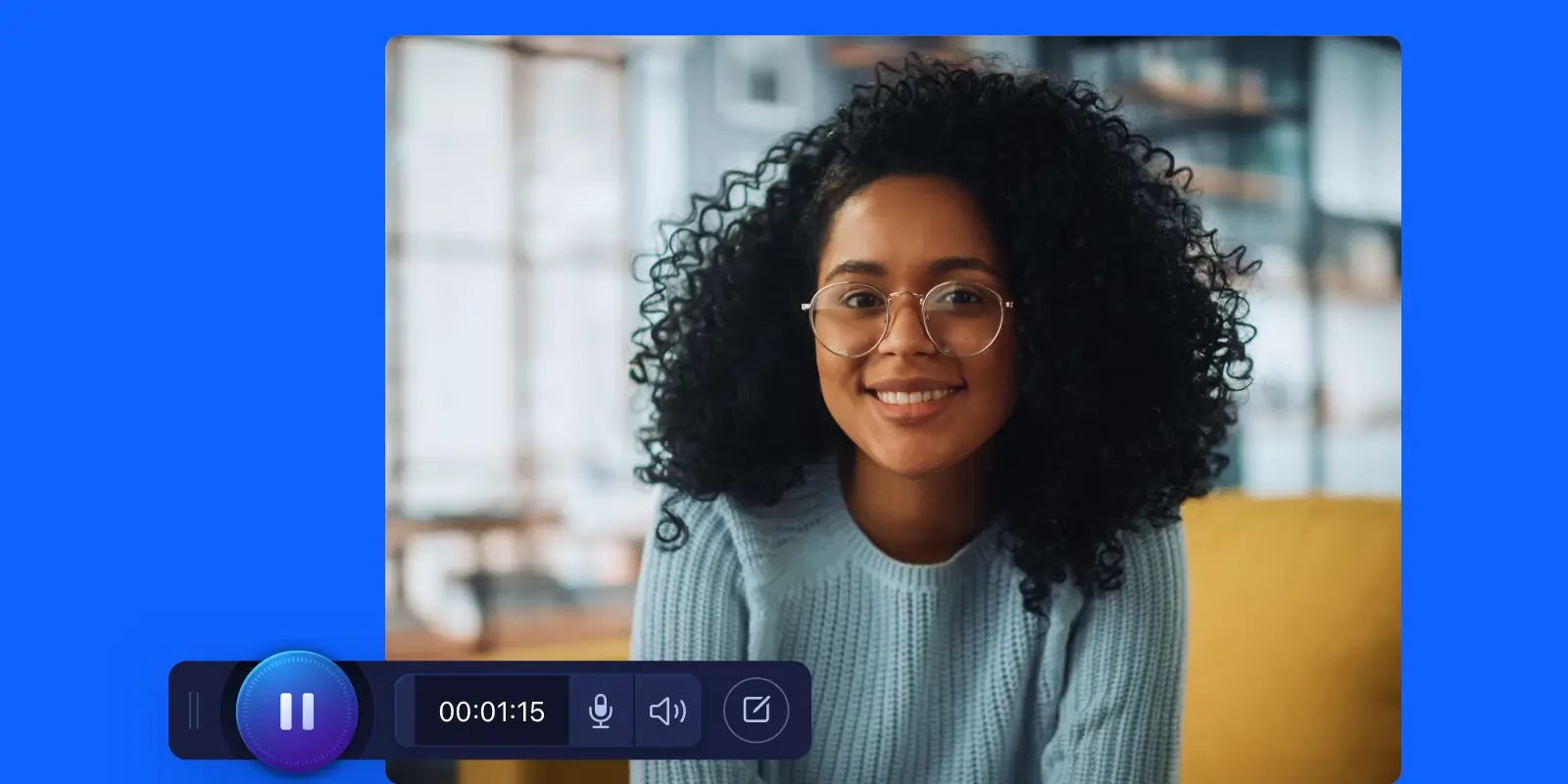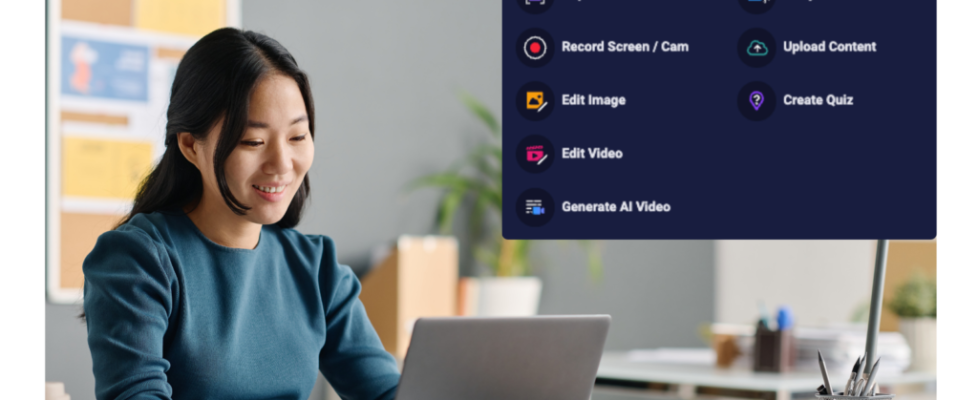 This post is the first in a series with Mentorship Academy called The University of Life series. We spoke with Mentorship Academy CEO & Founder Martin Mehl, as well as professors and students who are using MA’s strategies and ScreenPal’s tools to improve connection, communication, literacy, feedback, and mentorship in higher education.
This post is the first in a series with Mentorship Academy called The University of Life series. We spoke with Mentorship Academy CEO & Founder Martin Mehl, as well as professors and students who are using MA’s strategies and ScreenPal’s tools to improve connection, communication, literacy, feedback, and mentorship in higher education.
Professor Martin Mehl teaches communication, management, and public speaking at Cal Poly San Luis Obispo, where he shares his mentorship pedagogy and has been repeatedly recognized by students and faculty, including as a “Teacher of the Year” co-recipient in 2020 during CSU’s first year of mandatory remote education. Professor Mehl was the co-author of the “Handbook of Online Learning in Higher Education,” which captures the experience of leading educators and professionals in online learning. Professor Mehl and his research partner, Dr. Luanne Fose, studied the effects that video can have in teaching through their analytical research, ‘Digital Academic Revolution,’ which was recognized with the “2017 Effective Practice Award” by the Online Learning Consortium. Professor Mehl is the CEO and Founder of Mentorship Academy, LLC, and the CTO of NEXT Integrative Minds Life Sciences Ltd. Professor Mehl is a Scholar-In-Residence at the Orfalea College of Business Graduate School and coaches educators, business leaders, and the Learning and Development community on effective mentorship and the three L’s (data literacy, digital/AI literacy and neuro-literacy™) which is the core competency requirement for transformational growth in the 21st century.
The ScreenPal team spoke with Professor Mehl to learn more about the role of video in teaching and learning, what educators have learned from remote learning during the pandemic, and how to effectively use video in today’s blended classroom.
Read about our conversation on:
- Where we’ve been, what we’ve learned, and where we’re going with digital teaching and learning.
- What does the plan for where we’re going look like?
- What are some of the benefits of blended learning in terms of using your time differently or more effectively with students?
- How do you incorporate assessment into your flipped and online instruction?
- How might tools like ScreenPal benefit students in terms of becoming creators?
Let’s talk about where we’ve been, what we’ve learned, and where we’re going with digital teaching and learning.
In 2015-2016, we laid out a vision for the Digital Academic Revolution, showing how screen coaching and screen recording can help educators remove barriers of place and time and provide an on-demand approach to capturing and sharing knowledge. We saw the opportunity to use technology like ScreenPal and Zoom, which no one had even heard of. And we saw the potential to use async video to engage parents as well.
And then we get to March 2020, and everybody goes into survival mode. Everybody’s home; students are not coming into the K-12 classroom. They are empty. They are deserted. So these technologies were no longer a choice but a necessity.
A great analogy is off-roading, where people suddenly had to find a way to drive a new road and were stuck in the mud. We talked about the missing manual. I authored a chapter inside of the Handbook for Online Learning, which encapsulates the moment and the opportunity.
“Focusing on mentorship communication embraces technology as a natural extension in the arsenal of resources & research for its ambassadors of knowledge, the lifetime learners leading the next generation of digitally savvy mentees.”
When you’re off-roading, and you’re surviving and trying not to drown, it is not satisfactory; it is not fun. But now we’re at a new stage where we can again look at the opportunity, at what we’ve learned, and lay out a path for where we can go.
Today, when we talk about the path forward for educators to transform teaching and learning through video, we look at three input ingredients, which are neuro-literacy™, digital literacy including artificial intelligence, and data literacy. Neuro-literacy™ aims to bridge the gap between scientific understanding of the brain and its implications for teaching and learning. By examining how the brain processes information, acquires new skills, and retains knowledge, educators, leaders, and mentors can gain valuable insights into effective instructional strategies, curriculum design, and educational interventions. Rewiring the brain is literally a way of finding positive rather than negative patterns to succeed and embrace happiness and success.
The field of neuro-literacy™ recognized the complexity and dynamic nature of the brain and its perpetual restructuring and re-organizing both structurally and for functional change throughout a person’s entire life. It highlights the significance of fostering and generating rich, immersive learning environments that stimulate neural development, promote cognitive growth, and empower optimal learning experiences, both internally and externally.
Pairing the literacy skills training with mentorship communication guidance, we can envision this grid where one axis represents experience as an educator or mentor based on time, and the other axis represents experience with technology like ScreenPal based on skill level. And our goal is to help educators move along those axes to gain both digital technology literacy and experience with how to implement that technology in and out of the classroom. This pairing of skills and awareness leads to enhanced student engagement, motivation, and ultimately personal and professional elevated achievement and happiness.
There’s a strong misconception that you can only be an expert because you have years of experience. That is accurate, to a certain extent, where you have the ability to draw from mistakes you’ve made and fixed, but it’s also a matter of practice, practice, practice. Someone who is incredibly diligent and a creative educator could accelerate this experience timeline.
Those beginner, intermediate, or advanced steps on the timeline don’t have to be directly related to age. Those can be directly related to aptitude, ambition, and passion. So we often forget that this can even be students; this could be a grad student, not a professor. And if we merge those skill sets, we can suddenly have a TA or even a substitute teacher that can bring a completely new approach as long as a master educator embraces it. So this is a matter of community building and scaffolding.
There’s also a misconception that experience equals a formal education, and that’s not the case. In this day and age, skill and aptitude are not always directly congruent to title and certification. You might be a creative instructor but you only know that because of student reviews not because of any benchmarking. So I think there’s an absolute need to establish a new standard including rubrics and stages of accomplishment, and I’m excited and thrilled about being able to make that happen.
Back to the off-roading analogy, we now have the opportunity to plan our journey. What does that plan look like?
I think the best way we can use trip planning as an analogy is to keep the human in mind with technology. When anything feels uncomfortable or worrisome, there’s a reason. We know Zoom fatigue is a thing, and people are feeling complacent on the same old, same old. So we really need to embrace the best, those strategies and techniques that bring out the best in instructors and students, and not go with the things that were failures or mistakes. It’s important that we learned from them, but they shouldn’t be the things that hold us back.
So let’s talk about the journey and the plan for that journey. Looking back to the years before the pandemic, we knew we needed to be innovative and start to get away from the traditional model of standing in the front of the class droning at the student. We needed to become interactive and dynamic. This is why we were starting to look at how we can further enrich and holistically educate, which included different techniques and methodology. So you are looking at, in education, the applied models of learners being taught tangible skillsets, and the re-emergence of apprenticeships. Where you as a student start to have all aspects of your brain being triggered, having the growth mindset. Those are all trends that definitely occurred in that five-year window pre-pandemic.
And then we experienced some creativity fatigue because we went into survival mode. Previously, educators had confidence to try new things because we had the comfort of being in the traditional classroom and trying to improve that familiar environment. But then all of a sudden, people felt the rug pulled from underneath them, where what is known and routine is gone.
So now what do you do?
Solution 1, one teaches in an asynchronous environment with minimal to no guidance to the mentee. While digital illiterate instructors really don’t know how to lecture in that particular domain, one simply places all the materials out there and it’s almost becoming an autodidactic learning environment. Most people don’t thrive in that unless they already have a really high level of maturity.
Solution 2, is a hybrid model where a leader is bringing the dynamic into the place, but also does all the traditional and proven methodologies, and those are typically the ones that are a bit more experimental, yet successful.
Solution 3, educators finally say: this is entirely different. Our classroom looks, sounds, smells, feels, and tastes differently (Aristotle’s five canons of rhetoric.) So let’s see how we can bring out the best. That means trial and error, experimentation, and creativity in unprecedented and unheard-of ways. It is integrating an awareness of neurodivergent learners and creating the “least restrictive learning environment” for everyone. “Self-directed learning doesn’t mean you are on your own.”
And here’s where ScreenPal comes in. With ScreenPal, I can have this new teaching environment: the screen. I’m interacting with my students via a screen; instead of being a barrier, it can be a benefit. I have the ability not to intimidate a student and allow them to look at the content when they’re ready. I can be more accountable because my words can be repeated back to me.
We are about to experience the first generation of students that has the ability to go back to at least high school, or in some cases middle school, and see the digital products of their educational growth. This generation has the ability to say look, here is something I’ve done and I have a timestamp of what I have actually accomplished.
As educators, we now have that same ability to capture, share, and archive our knowledge for long-term benefit. People on our staff have unique skill sets and are subject matter experts. We can capture their expertise and use that to benefit students and extend our own expertise. We can go and teach one class with six or seven different voices.
Let’s say a math instructor has a colleague who is also teaching the same grade level and is really good at a particular part of the curriculum. Now he can create a ScreenPal-based module that gets plugged into all the classes so every student benefits from that expertise, and no parent is frustrated about not having this really great teacher that does this one thing really well. Now a school principal can bring the best skill set out in every single one of her teachers, allowing educators to find their niche and their skillset and then be contributory.
Now you can spend less time on things you don’t like and more time on things you’re good at. Now you can refine your skills, and focus on how do you improve your modules, how do you optimize your contribution.
I think most of us forget that when we are augmenting our instruction with ScreenPal, we have the ability to edit our recordings, refine them, build modules, and now we have a repository of skills and content. If you’re an incredibly versatile instructor, you can build that archive of lectures and knowledge to pass down for generations. You get to be a legacy at your school!
That is what exactly the future ought to look like in education.
What are some of the benefits of blended learning in terms of using your time differently or more effectively with students?
I love that question, and to paraphrase: what do I gain by being a tech-centric but human-oriented instructor?
I think the first benefit is having more time to be available to students who need one-on-one time and guidance. Most of the time the reason educators in the field don’t get to talk to students is because they are busy grading or teaching or simply surviving their daily routine. With ScreenPal I’ve been able to extend my expertise and automate some of my more routine tasks by creating high-quality video content and feedback, which then frees up my time for more personalized mentorship as well as self-care.
It also makes me more alert and aware to field questions from students, so I can hone in on customizing and individualizing the answers so it doesn’t feel so cookie-cutter. It also permits me to see a pattern and respond. So for example, if in a particular quarter I see a pattern in student projects or responses, I can record a module and address 40 students simultaneously rather than individually. And then I can further refine individually with what some of the nuances may very well be. So ScreenPal saves me time, helps me stay alert and aware, and most importantly allows me to bond with my students.
With the efficiency and time savings of digital instruction and mentorship, I have the time to do the things that are under the three pillars in every educator’s realm.
Number one is contributing to further knowledge in the field research. Number two is teaching and lecturing. And pillar number three, community outreach, is the most overlooked because it’s the one that is not as measurable. You have the amount of publications, you have student reviews, but the intangible of leaving a student with a smile of satisfaction or less of stress or a job interview. That is literally the secret sauce on why this job is the most fulfilling job you could possibly be practicing, and why wouldn’t you want to pour more into the third pillar?
I love research. Ask anyone that has worked with Professor “Happy” Mehl. I love research. I don’t want to diminish that. But it only has an impact if I’m seeing the merit of my research impacting my mentees and vice versa.
I might have to change what I’m researching; I might have to change what am I lecturing, because I’m now creating a feedback loop where my students tell me, you’re so much more relaxed in video and I realized why am I not like that in class? In class, I focused on tasks, and now I can focus on skillsets. It makes me a more approachable, kinder, and quite frankly a more clear instructor. This now means I am approaching the classroom as a place where we can have fun together and have a teacher-student model that’s not indoctrinating but rather sharing knowledge with one another.
How do you incorporate assessment into your flipped and online instruction?
The most elegant way of learning is when you don’t realize that you are learning. And there are ways of checking student progress without them noticing that, either. Having a rubric and assessment tool and being able to benchmark is critical, as anyone in Learning and Development will tell you.
So if I’m telling you that using ScreenPal in my classroom is great, the first question you’ll ask is, how do you know? If you’re looking at retention rates, one measure is knowing that students don’t drop the class, and at what rate are students staying in the class and staying in their major.
Another measure is assessing the quality of digital content students produce year over year, or quizzes and examinations. For example, when I started training students on how to do their own screen capture and editing with ScreenPal, I saw almost an entire letter grade increase in my class.
One of the benefits we’ve seen using ScreenPal is the integration of both verbal and nonverbal communication in assessment and feedback. Prior to 2020, we weren’t using those non-verbal tools. Now we can use video as part of an assessment and have some of the intangibles become tangible.
With interactive questions and surveys, students don’t have to memorize everything for a single test and then forget about it. You get to capture that knowledge along the way and you get to see students progress.
You have students who are also creating videos in your courses. How might these kinds of tools benefit students in terms of becoming creators?
That’s a good question. Another way to frame the question is, when the students are the creators and when the students almost become the teacher, how do we empower them to use video without feeling lost or overwhelmed?
That goes a little bit to my teaching philosophy. I like modeling a lot. The first step is to set expectations and show students what you would want them to be able to accomplish.
Because I now have a library of student assignments from over the years, I have the benefit of showing examples of successful or not-so-successful approaches. It’s a good idea to demonstrate clearly for students what worked well and what didn’t work well.
Another aspect of modeling is helping students become more creative step-by-step. I can walk them through each step of the project and say look, you have done a really good job converting a traditional slide deck into a video. Now you see your camera in the corner and your slide deck, and you’re now ready to explore multiple ways to embellish your video. But that first was converting a document you were familiar with into a product that you’ve not previously created.
Another aspect of modeling that is important is not to intimidate students. For example, I wouldn’t want to start with, here’s an Oscar-winning approach, when a student has just hit record on a camera for the first time. So setting clear and reasonable goals and expectations are crucial.
This generation, including this gutsy third-grader, might look at a TikTok or a YouTube video and immediately think, I can do that! But planning is key, and so as educators, we can help scaffold the process to guide students in planning: what are the tools you have, how much time can you allocate, what are the steps you need to take to develop your skills and reach your goal.
So patience is one of the most foundational things. I’m a person that clicks buttons, and I learn by clicking and seeing if a button is intuitive. User experience is where the team at ScreenPal is really versatile, in designing an experience that is simple but easy to use. A lot of learners will learn new tools by exploring, but others who may approach new tools more methodically will need to have a tool that permits them to understand quickly where everything is.
ScreenPal has balanced those two learning modes really well. It has enough substance to cater to the analytical learner as well as those who like to play around, just like the CalPoly Slo motto, “learn by doing.” I am excited for the University of Life series and providing those in the playroom, classroom or boardroom with solutions, ideas, and problem-solving skills in ways that either showcase or model opportunities.
Read the next post in the University of Life series:
 Save time and improve student engagement with ScreenPal
Save time and improve student engagement with ScreenPalMaximize your instructional impact, personalize student feedback, and build stronger connections with video.
Learn more about ScreenPal for education

































